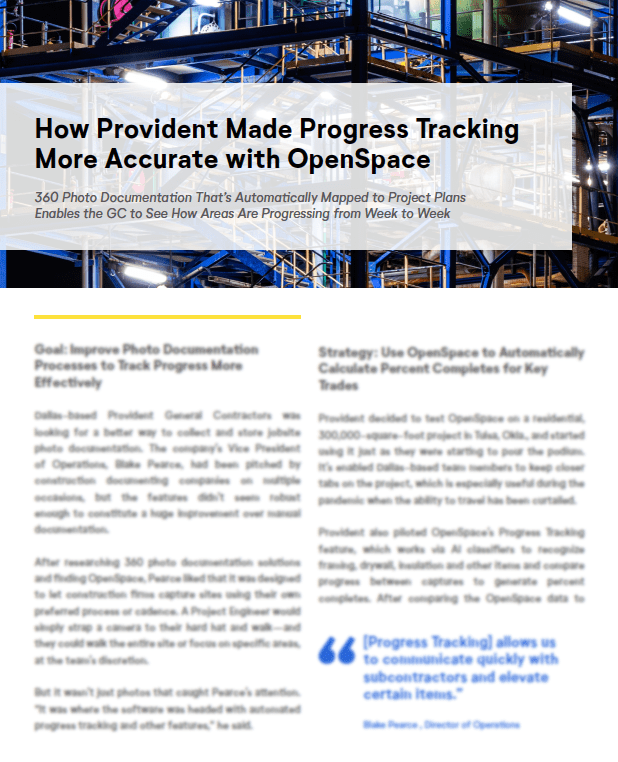How Provident Made Progress Tracking More Accurate with OpenSpace
Dallas-based Provident General Contractors was founded in 2004 and is committed to reducing project duration, minimizing cost, and mitigating risk. The company provides preconstruction, general contracting, and project management services for a wide range of clients.
Provident needed a better way to collect and store job site photo documentation and selected OpenSpace after reviewing many construction documentation solutions. A key factor in the decision was the platform’s flexibility, enabling construction firms to capture job sites using their own preferred process or cadence. OpenSpace’s automated progress tracking feature was the clincher. Having a reliable, accurate source of truth has helped teams spot quality issues faster and improved coordination among project stakeholders.
Read this case study to learn how, working with OpenSpace, Provident has achieved 100x more complete documentation at a rate that’s at least 10x faster than manual capture. The company has also saved valuable time and resources with faster detection of quality issues and an expedited insurance claim process.
Learn more about the products and technologies featured in this case study:
Damian Millisor
Project Manager
Provident General Contractors




